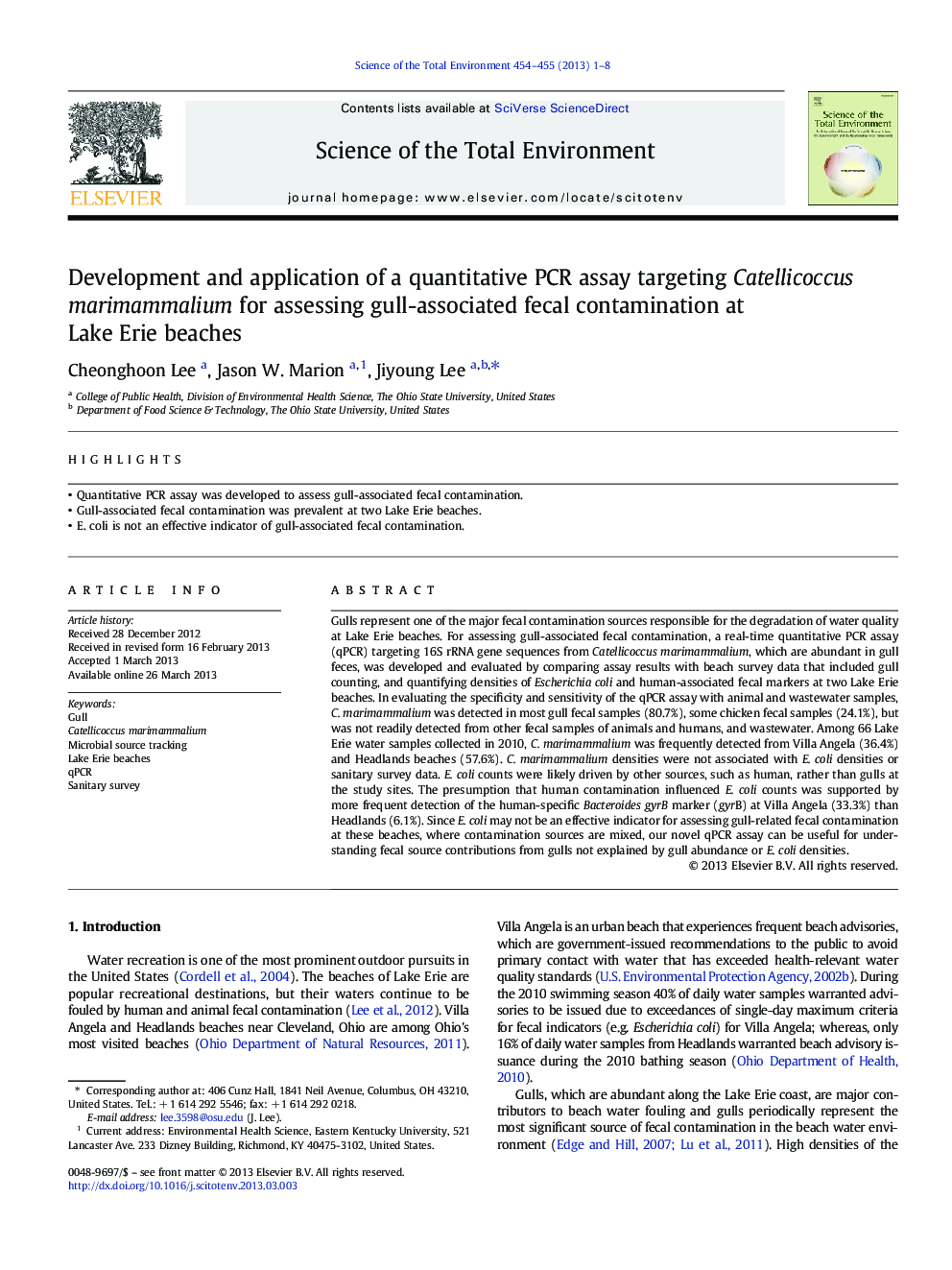| کد مقاله | کد نشریه | سال انتشار | مقاله انگلیسی | نسخه تمام متن |
|---|---|---|---|---|
| 6332940 | 1619802 | 2013 | 8 صفحه PDF | دانلود رایگان |
عنوان انگلیسی مقاله ISI
Development and application of a quantitative PCR assay targeting Catellicoccus marimammalium for assessing gull-associated fecal contamination at Lake Erie beaches
دانلود مقاله + سفارش ترجمه
دانلود مقاله ISI انگلیسی
رایگان برای ایرانیان
موضوعات مرتبط
علوم زیستی و بیوفناوری
علوم محیط زیست
شیمی زیست محیطی
پیش نمایش صفحه اول مقاله

چکیده انگلیسی
Gulls represent one of the major fecal contamination sources responsible for the degradation of water quality at Lake Erie beaches. For assessing gull-associated fecal contamination, a real-time quantitative PCR assay (qPCR) targeting 16S rRNA gene sequences from Catellicoccus marimammalium, which are abundant in gull feces, was developed and evaluated by comparing assay results with beach survey data that included gull counting, and quantifying densities of Escherichia coli and human-associated fecal markers at two Lake Erie beaches. In evaluating the specificity and sensitivity of the qPCR assay with animal and wastewater samples, C. marimammalium was detected in most gull fecal samples (80.7%), some chicken fecal samples (24.1%), but was not readily detected from other fecal samples of animals and humans, and wastewater. Among 66 Lake Erie water samples collected in 2010, C. marimammalium was frequently detected from Villa Angela (36.4%) and Headlands beaches (57.6%). C. marimammalium densities were not associated with E. coli densities or sanitary survey data. E. coli counts were likely driven by other sources, such as human, rather than gulls at the study sites. The presumption that human contamination influenced E. coli counts was supported by more frequent detection of the human-specific Bacteroides gyrB marker (gyrB) at Villa Angela (33.3%) than Headlands (6.1%). Since E. coli may not be an effective indicator for assessing gull-related fecal contamination at these beaches, where contamination sources are mixed, our novel qPCR assay can be useful for understanding fecal source contributions from gulls not explained by gull abundance or E. coli densities.
ناشر
Database: Elsevier - ScienceDirect (ساینس دایرکت)
Journal: Science of The Total Environment - Volumes 454â455, 1 June 2013, Pages 1-8
Journal: Science of The Total Environment - Volumes 454â455, 1 June 2013, Pages 1-8
نویسندگان
Cheonghoon Lee, Jason W. Marion, Jiyoung Lee,